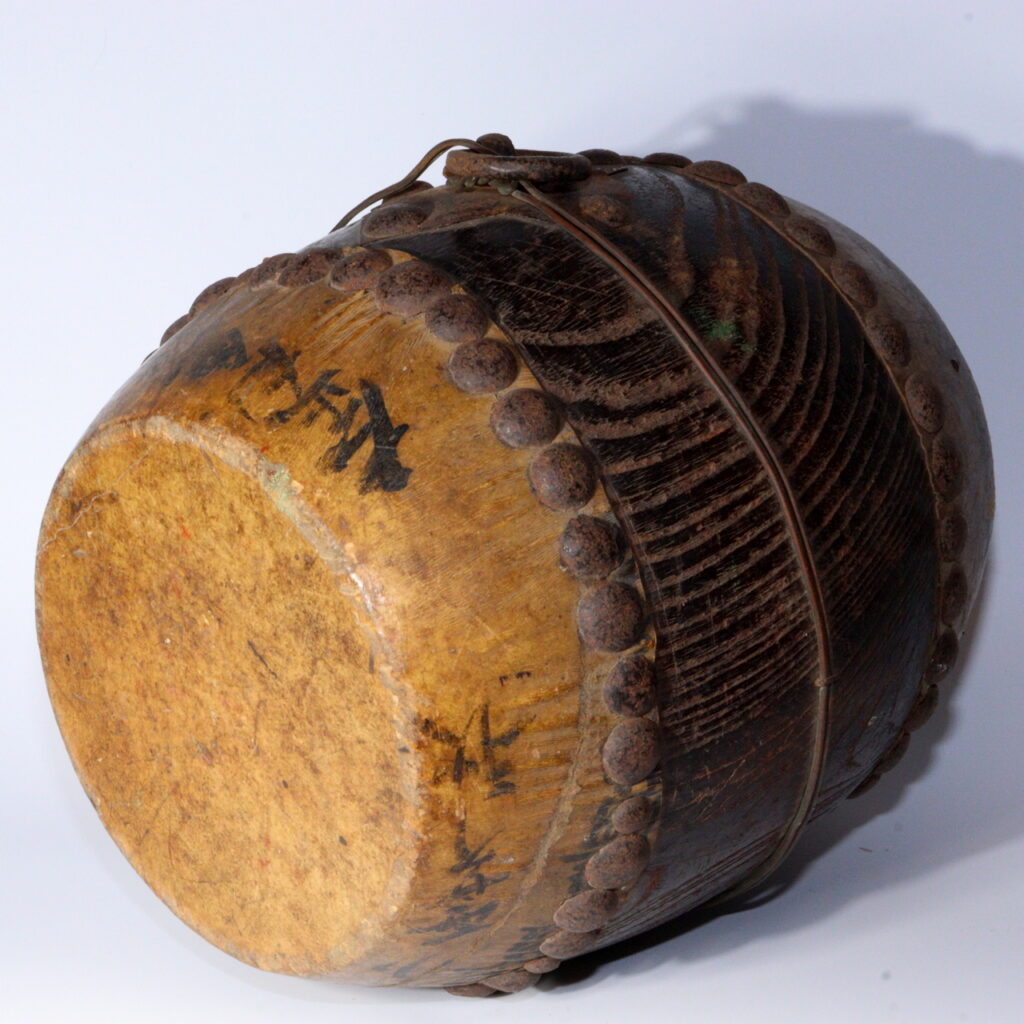

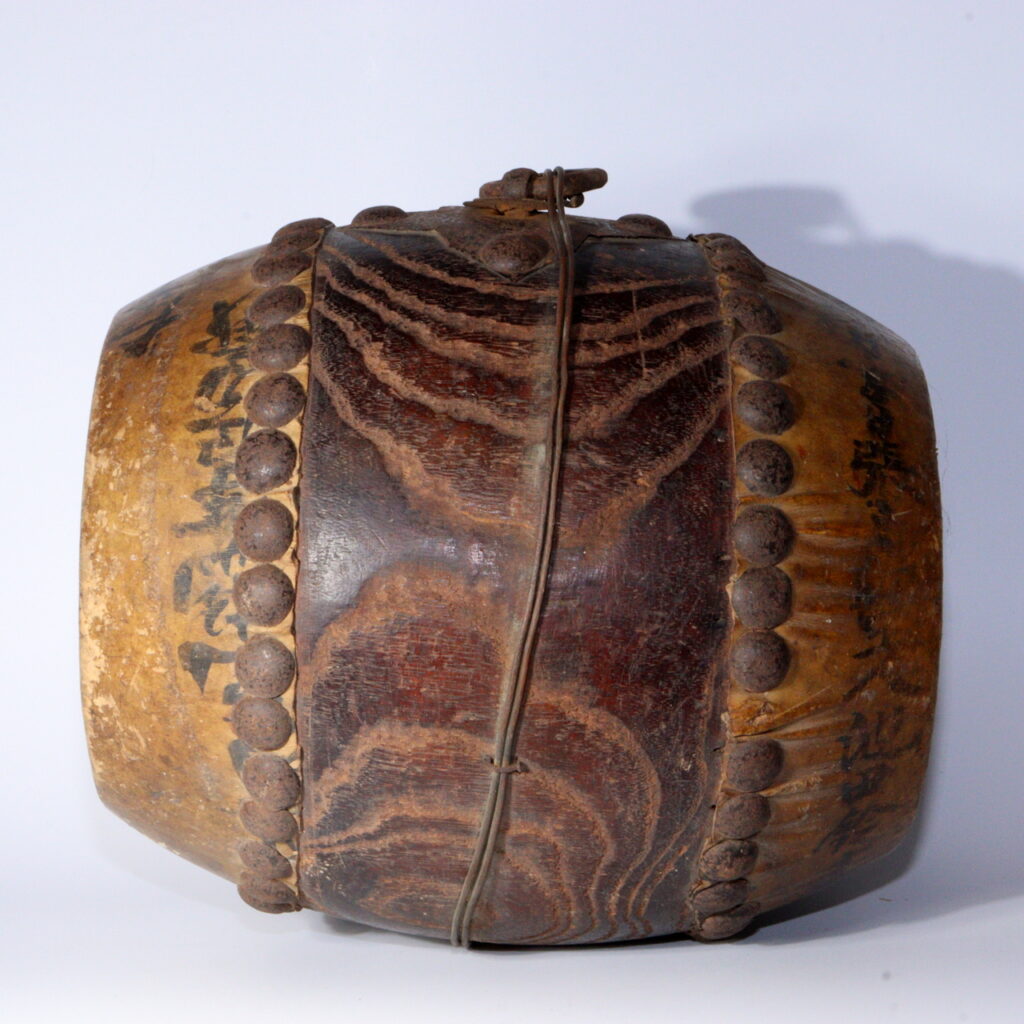
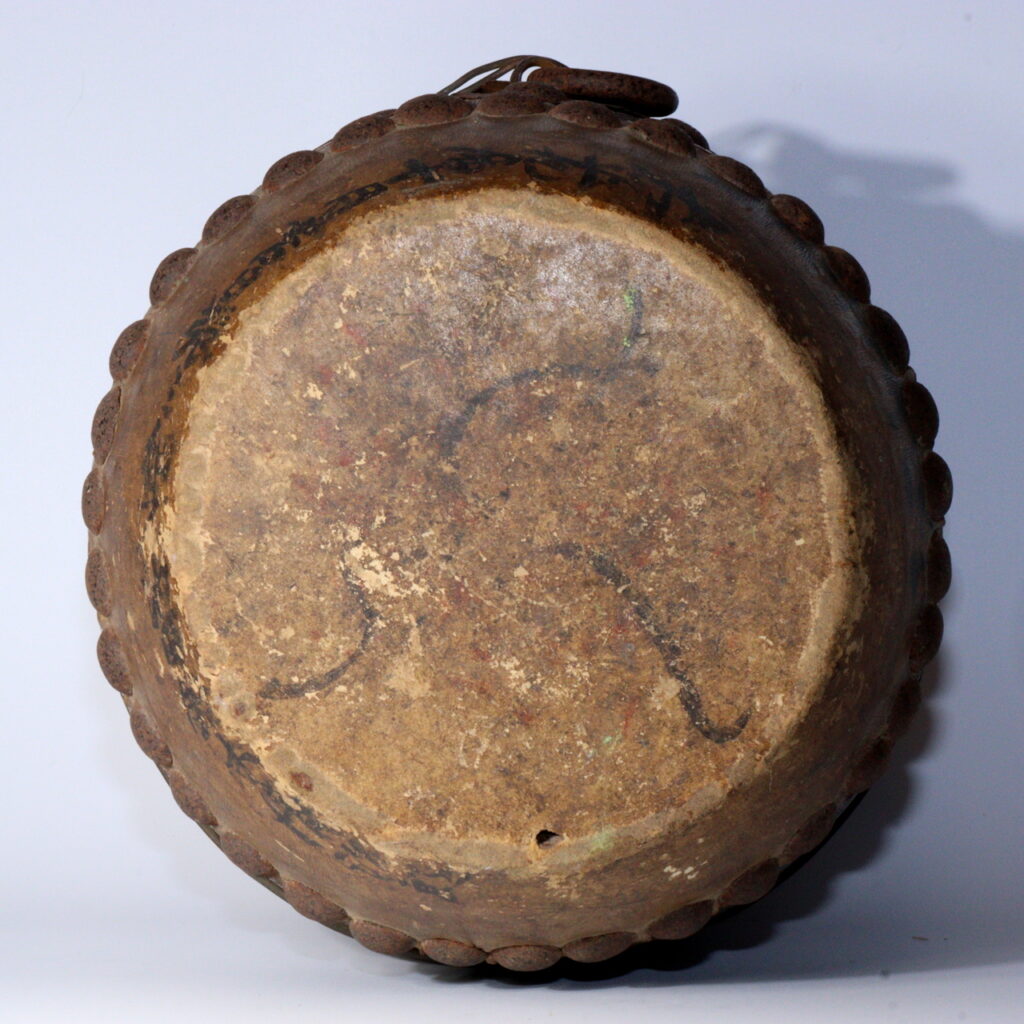
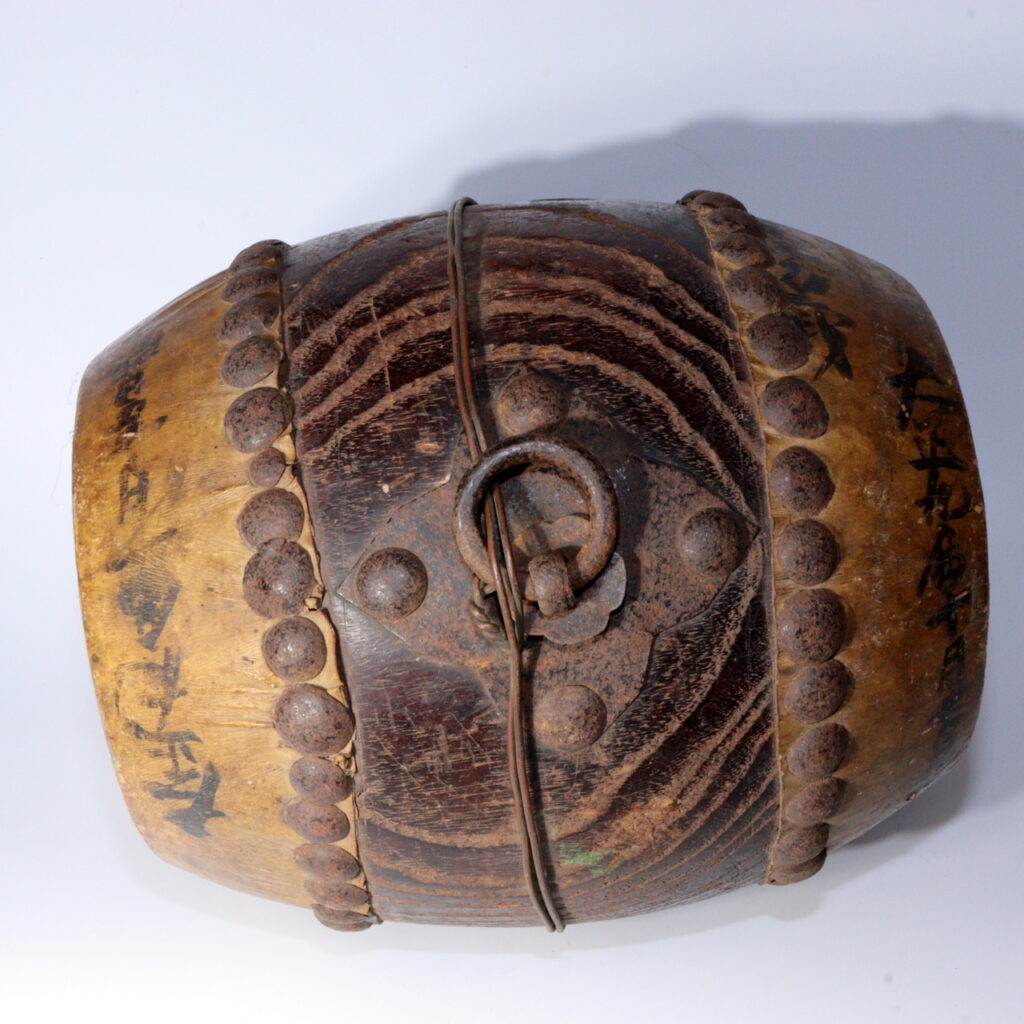
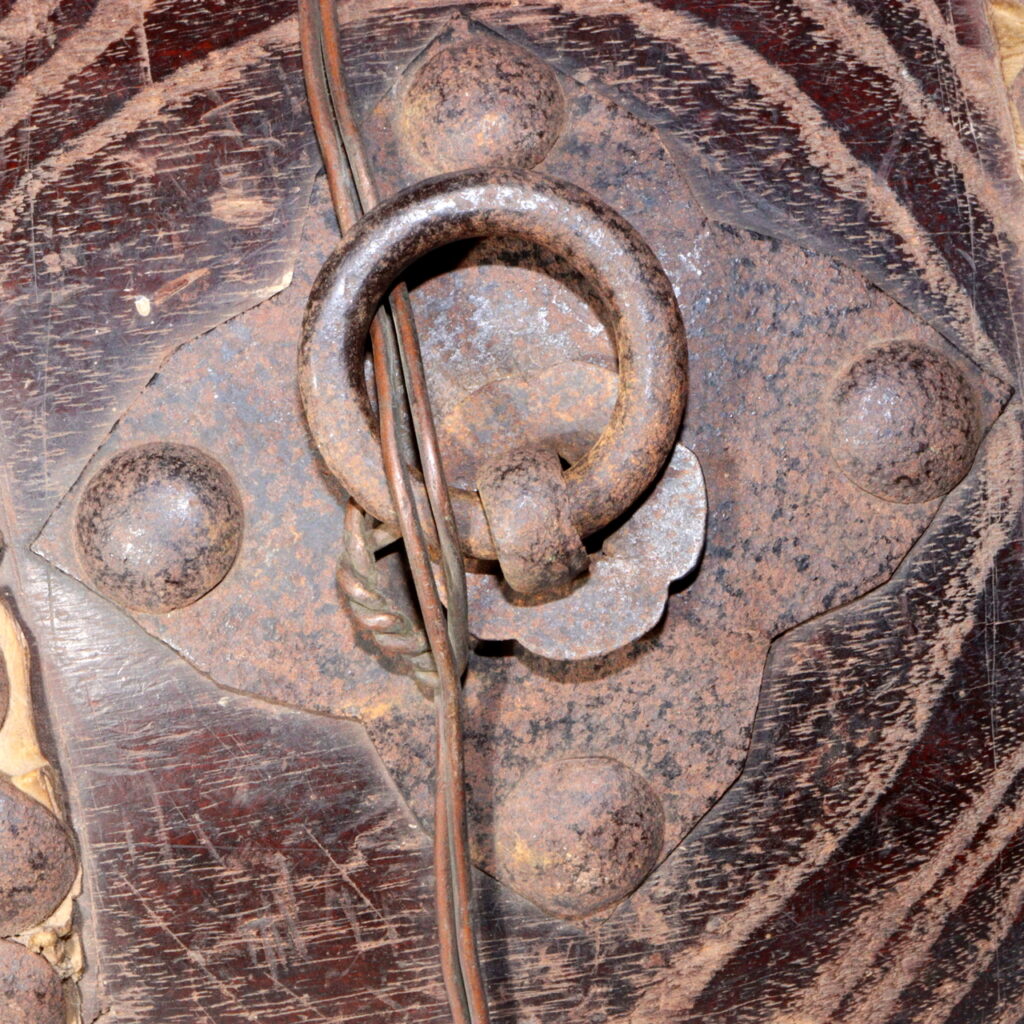

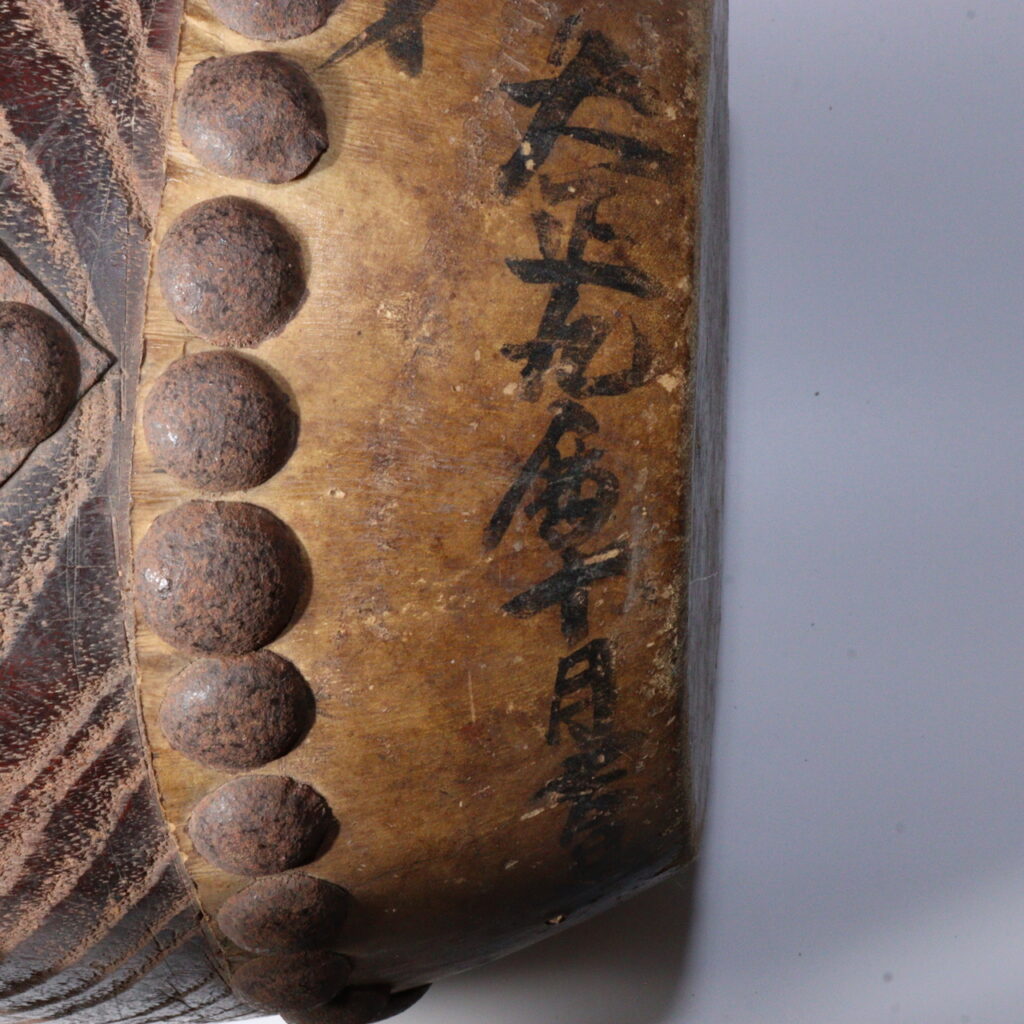

A festival heartbeat preserved in wood and hide
Among Japanese antiques that still seem to breathe, few objects carry living rhythm like a shrine wadaiko. This Taishō-era drum once sounded through a Kyushu shrine’s matsuri, guiding processions, punctuating Noh and Kyōgen interludes, and calling a community to celebration and purification.
The Story Behind This Piece
This drum dates to Taishō 9 (October, 1920)—its ink inscription confirms the moment. The Taishō period (1912–1926) bridged Meiji modernization and early Shōwa, and local shrines remained anchors of tradition. In Kyushu, where sea routes brought diverse influences yet preserved strong Shintō customs, drums like this marked sacred time: the opening of a rite, the turning of a dance, the safe return of a portable shrine (mikoshi).
In Japan’s ritual vocabulary, drum → shrine → festival → purification is a natural chain. Sound was not mere music; it was a spiritual signal, believed to attract the kami and purify space for the community.
The Beauty and Craftsmanship
Carved from a solid wooden body and laced with hand-tacked rawhide heads, the drum shows the quiet authority of traditional craftsmanship. Rows of iron studs ring the shell; the surface bears the patina of handling, storage, and seasonal use—subtle gloss on the wood, rich ambering on the hide, and honest wear that collectors prize as wabi-sabi.
A suspension fitting crowns the shell for carrying or hanging on a shrine frame. Tool marks along the staves and the natural undulation of the leather attest to handwork over mechanization—typical for regional shrine instruments of the era.
Though the condition remains sound and the drum can still be played, its historical inscription and aged hide recommend it primarily as a display piece: an artifact whose visual presence evokes procession, chant, and lantern-lit nights.
Contrast: Unlike many Western orchestral drums engineered for maximum projection and standardized tone, a Japanese wadaiko serves ritual cadence and atmospheric depth, where resonance supports space and spirit rather than virtuoso display.
Its Value for Collectors Worldwide
For overseas collectors of Japanese culture, this wadaiko offers layered significance:
- Cultural heritage: A documented Taishō-period instrument tied to Shintō practice and matsuri performance.
- Decorative presence: Sculptural form, warm wood, and studded rims sit comfortably in both minimal and eclectic interiors—ideal for entry halls, music rooms, or tea spaces.
- Interdisciplinary appeal: Relevant to those who collect Tea Ceremony Items, Shinto Artifacts, or Handcrafted Traditions, as well as to designers seeking authentic narrative pieces.
- Research potential: The 1920 ink inscription and regional provenance (Kyushu) provide anchors for further study in local festival history and shrine music.
Owning this drum is like holding the pulse of a village, a tangible reminder that art in Japan has long lived where craft, community, and belief meet.
Conclusion & Product Link
This Taishō-era shrine drum preserves not only sound but time—a rare combination of material honesty, ritual function, and elegant simplicity that defines the best of traditional Japanese design.
👉 Prhttps://koedo-sun-art.com/search?q=WD31&options%5Bprefix%5D=last
If this piece has already found its new home, please explore more treasures here:
🔗 https://koedo-sun-art.com